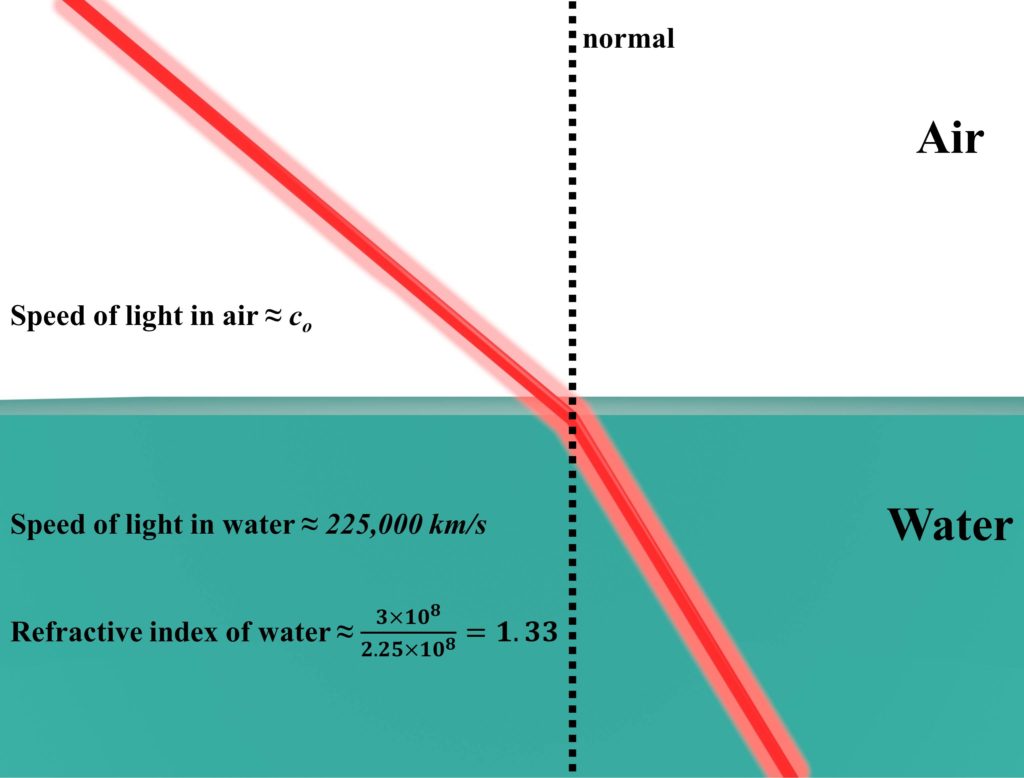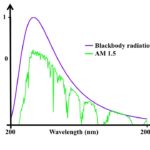Inroduction to refractive index calculator
The refractive index describes the change in speed of light as it enters from air into the material under observation. Therefore, the refractive index is a material property and everything we see around in our daily lives is composed of different materials. All of the materials have a distinct refractive index and usually, this value of the refractive index varies depending upon the wavelength of light. This phenomenon is called dispersion of light, where the velocity of wave in a medium depends upon the frequency of the wave and these quantities can be related to the speed of light and wavelength, respectively. The refractive index (n) can be calculated using a simple formula that relates the speed of light in a material (v), and the speed of light in the air (c).
The speed of light in air is close to the speed of light in a vacuum, therefore, both of these values will yield almost the same result. The refractive index value from this formula will be in the range of 1 ≤ n ≤ ∞.

However, normally, all the materials show a complex refractive index value (N). This complex value of the refractive index is related to two properties of a material known as relative permittivity (εr) and relative permeability (μr). Permittivity and permeability define the ease of setting up electric and magnetic polarizations, respectively, in a material. The refractive index can be found in terms of these quantities as follows.
Both relative permittivity and relative permeability are also complex quantities and the refractive index calculator presented here also take that into account.
Instructions on using refractive index calculator
- Select the refractive index calculator depending upon your desired calculations. For simple calculations involving the speed of light in a material and speed of light in air, the default calculator (“Refractive index from speed of light”) will work. For calculations involving permittivity and permeability, select “Complex refractive index from permittivity and permeability”.
- You will need to enter the real and complex parts of relative permittivity and relative permeability separately. The result will also be displayed in real and imaginary values, separately.
- For small values of speed of light in a material, the refractive index will yield high values, which might not be accurate. REMEMBER, the speed of light you have to enter should be in meters per second (m/s).
- For the cases where the imaginary values of relative permittivity and relative permeability cancel each other, the resultant imaginary part refractive index will have no value, as it should be.
- The refractive index calculator calculates the refractive index at a particular wavelength. For calculation at different wavelength, reinsert the new values.
- This calculator is a dynamic calculator, i.e., the results which change when new values are inserted or already entered values are changed.
Further readings
If you liked this post you might be interested in reading the following posts.
- Refractive Index Calculator both simple and complex

- Blackbody radiation calculator for specific wavelengths and temperatures

- Complex number calculator with one and two inputs

- Water pumping system design calculator using solar energy

- Payback period calculator for solar PV system

- Construction, working, and new technologies of OLED TV
- Laser and its applications in medicine and technology
- LED light, its construction, types and colors, power, life, and technology
- Optical fiber design and applications
- Radiation therapy for cancer treatment and its side effects
